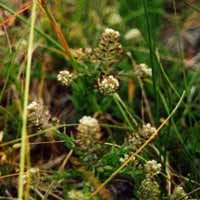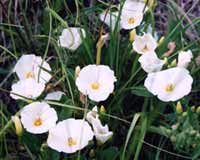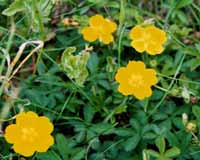![]()
AN ACCOUNT OF THE SPECIES FOUND ALONG THE LINEAR PARK AND A MANAGEMENT STRATEGY FOR THEM
The survey of the plant and animal species present along the Linear Park carried out by EMEC Ecology was the basis on which the Management Plan was built. For details of the Plan and the different habitats and plant species click here. Though it was the flora that was used to define the habitats the core of the plan was to manage the habitats so that the invertebrates and birds that lived among them would flourish.
A full list of all the species found in the Park can be seen by clicking here.
Invertebrates
The range of habitats and the presence of warm southerly-facing banks creates ideal conditions for invertebrates, especially butterflies and moths. Of the 22 butterflies that occur in Nottinghamshire, 19 occur on the Linear Park. There have also been recent records of the nationally rare four-spotted moth and the locally scarce small yellow-underwing moth being present. Some butterfly species recorded in the Park, such as the speckled wood are characteristic of woodland edge and scrub habitats whilst others such as the grizzled skipper require a mosaic of different habitat structures including broken short turf and scrub for shelter. The four-spotted moth is one of 53 moths listed as a priority for attention. Since 1980, the moth has only been recorded in four areas of Britain including Nottinghamshire and parts of Lincolnshire. The grizzled skipper has a restricted distribution in Britain and there has been a significant decline nationally in recent decades. This species is classified as ‘High Priority Regionally Important’ as there are less than 30 colonies remaining in Nottinghamshire. The brown argus, which also occurs on the site is a species which, fortunately, is currently expanding its range and becoming more widespread in the county. This diversity of invertebrate species is a reflection of the diversity of conditions and presence of a wide variety of plant species found along the Park. Invertebrates will be found in areas which provide host plants for larval stages and nectar sources for adults and Bingham Linear Park and the adjacent areas of the disused railway that lie outside the parish are considered to be one of the key areas in the county where favourable conditions are found. The main aim of the management activity will be to maintain this diversity of conditions and the botanical variety.
Birds
The bird species present in the Park include a good range of woodland and scrub species. Spotted flycatcher, bullfinch, song thrush and linnet are likely to breed in the woodland areas whilst whitethroat, lesser whitethroat and blackcap are likely to breed in the areas of scrub. Skylark, corn bunting and yellow wagtail use the site for foraging and are likely to be breeding on arable land nearby whilst fieldfare and redwing are likely to be winter visitors foraging in the area between October and April. In all, over 30 bird species have been recorded some of which are of conservation concern both within the county and nationally.
The Importance of a Management Plan for the Linear Park
 Pepperwort Photo: Bill Bacon |
Although the site is artificial in that
it was created as part of the national railway system,
the site has been colonised by a range of natural and
characteristic species many of which are rare or are
absent from the surrounding agricultural landscape.
Disused railway lines such as this that have vegetated
naturally are forming important linear ecological corridors,
linking isolated habitats and providing routes along
which animals and plants can disperse. Unimproved species-rich
grassland, such as the Linear Park provides, is a rare
and declining habitat both within the County of Nottinghamshire
and, indeed, nationally. As the surrounding land is
mainly intensively farmed, the grassland and scrub areas
provide an important refuge for species unable to survive
in the modern farmed landscape. This importance is emphasised
by it being included in both the National (1995) Biodiversity
Action Plan and that of the County (1998). The particularly
notable species the site supports include black spleenwort,
cowslip, long-headed poppy, nipplewort, Smith’s
pepperwort, smooth hawk’s beard, squirrel-tail
fescue, wild carrot, wild turnip and yellow-juiced poppy. The good management practices to be implemented are likely to enhance the habitats in the following ways. |
a. The grassland areas will be enhanced by removing some of the encroaching scrub whilst retaining other sections for breeding birds. A five-year rotation mowing regime will improve the quality of the grassland habitat, promote a flower rich sward and reduce the dominance of the coarse leaved tussock forming grasses.
| b. Selective coppicing will
enhance the structure and age range of the trees and shrubs. This
will create a greater diversity of habitats suitable for a wider range
of plants and animals. Removal of some of the non-indigenous trees
and shrubs will increase the conservation value of the site. c. The four-spotted moth requires open, sunny conditions including the presence of a sparse sward with abundant field bindweed – the larval host plant. The larvae feed on the flower buds and leaves of field bindweed, but breeding seems only to take place where the bindweed grows in dry, sunny microclimates, such as south-facing slopes by railway lines where the bindweed grows over bare patches of ballast or verge side. The need for the host plant to be growing in such specific conditions explains why the moth is nationally rare whilst the larval food plant is common. If it is still present an increased habitat for the moth could be provided by ‘scraping’ sections of the embankment bare of vegetation in the hope that they would be rapidly re-colonised by field bindweed. Flower-rich areas of grassland will need to be maintained nearby to attract the adult moths. |
 Field bindweed, white variety. This is the food plant for the four-spotted moth larvae.Photo: Bill Bacon |
|
|
d. The grizzled skipper has a similar requirement for warm, sheltered sites and, like the four-spotted moth, its habitat is defined by the requirements of the larvae. The most important larval food plant on the Linear Park is creeping cinquefoil although other species may be used. To provide suitable sites for egg laying, food plants need to be growing in unshaded but sheltered conditions, with occasional patches of bare earth. Such conditions will also be suitable for a range of other invertebrate species, such as the brown argus and the small yellow underwing moth, both of which are locally scarce. The most important larval host plants for the brown argus in the Park is likely to be crane’s bill species. The larval host plant of the small yellow underwing is common mouse ear. |

